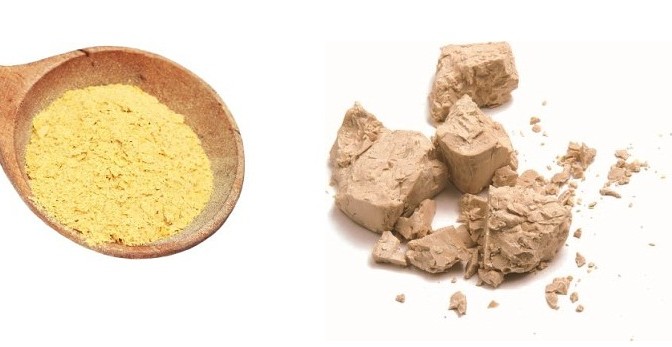Difference between various types of yeast?
The process of proving it can be summed up in three different categories: Chemical leavening, physical and biological leavening leavening.
We are used to seeing the yeast in different ways, in the form of dough, dried granules, or as sourdough.
What is the difference between different types of yeast?
Leavening is a process that allows the formation of gas within a dough, it does increase in volume both before, both during cooking.
Let's see how these processes occur.
PROVING PHYSICS
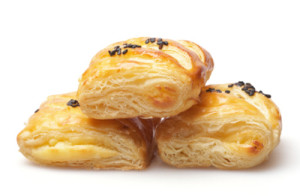
This technique is widely used in confectionery. Questo tipo di lievitazione avviene grazie alla dilatazione termica dell’impasto durante la cottura. Products that contain inside egg whites are shining examples: the egg white mixed dough, thanks to the protein structure, manages to retain the air inside; while cooking the air bubbles remain trapped in the mesh structure of the protein re-inflating the sweet. Another example of this type of leavening is given by the puff pastry, where layers of fat such as butter and margarine are stacked in layers of dough. In cooking, the water vapor that is formed between the layers browsed is restrained from fat, creating empty areas within the product.
PROVING CHEMISTRY: YEAST CHEMICAL POWDER
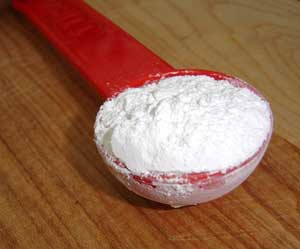
This type of leavening, is used in many bakery products especially in the professional and home cakes. The function of this yeast is to produce carbon dioxide during cooking, re-inflating the dough. Il lievito chimico è un composto in polvere formato prevalentemente da bicarbonato di sodio unito a un elemento acido che produce anidride carbonica durante la cottura. The first baking powders were created at the end of industrially 1800. Un altro tipo di lievitazione chimica è rappresentata dal bicarbonato d’ammonio o ammoniaca per dolci che è utilizzato nella preparazione di biscotti particolarmente friabili. The downside of this type of yeast is given precisely by the smell of ammonia which should be eliminated in the cooking following the right timing.
PROVING BIOLOGICAL: BREWER'S YEAST AND YEAST MOTHER
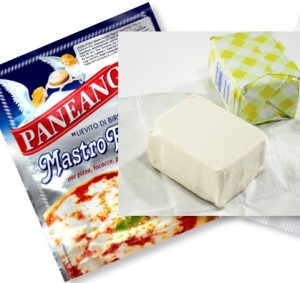
Leavening organic produce carbon dioxide through mechanisms of alcoholic fermentation that occur at the cellular level; i due principali agenti lievitanti sono il lievito compresso e il lievito naturale o lievito madre. The mechanisms of biological leavening were known since ancient times, When mixtures of water and flour were rested developing yeast which then in cooking rigonfiavano product. In 1930 was isolated the first yeast and performed an industrial production. Il lievito compresso si presenta sia in forma di panetto sia sotto forma di granuli disidratati. Il nome corretto è Saccaromyces Cerevisiae (da cerevisia, beer, in latino) and is a single-celled fungus that reproduces by budding.
Commonly called brewer's yeast perché in passato si ricavava da depositi che si formavano durante la fermentazione dei fusti di birra, today is produced with a compound from molasses; subsequently, through industrial processes, the yeast is compressed in cakes.
Dehydrated: The same yeast is dehydrated by reducing moisture and obtaining the granules of dry yeast.
Il Saccaromyces Cerevisiae è un fungo che inizia a riprodursi in presenza di ossigeno: This occurs thanks to the presence of air incorporated during the steps of mixing. Out of oxygen, the fungus triggers a mechanism of fermentation which produces ethyl alcohol and the part of carbon dioxide that is used to re-inflate the alveolar and doughs, before and during cooking.
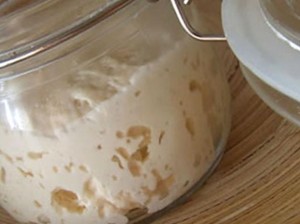
Il lievito naturale o pasta madre è un importante processo della lievitazione biologica. Was used in baking long before the yeast, the sourdough is a mixture of water and flour, left to ferment at room temperature, develops colonies of yeasts and lactic acid bacteria that reproduce and, in the mixing phase, have power leavening. The leavening process is equal to that of the yeast: alcoholic fermentation with gas production that create volume and alveoli in the cooked product. Unlike the compressed yeast, con il quale ha in comune la presenza del Saccaromyces Cerevisiae, sourdough develops inside multiple colonies of yeasts and lactic acid bacteria: the latter is an important difference between the compressed yeast and sourdough, in quanto la loro fermentazione sviluppa profumi e sapori particolari molto ricercati nel campo della panificazione. The higher acidity present in naturally leavened dough also allows a longer shelf life of the product, or a delay in the staling of the same.
